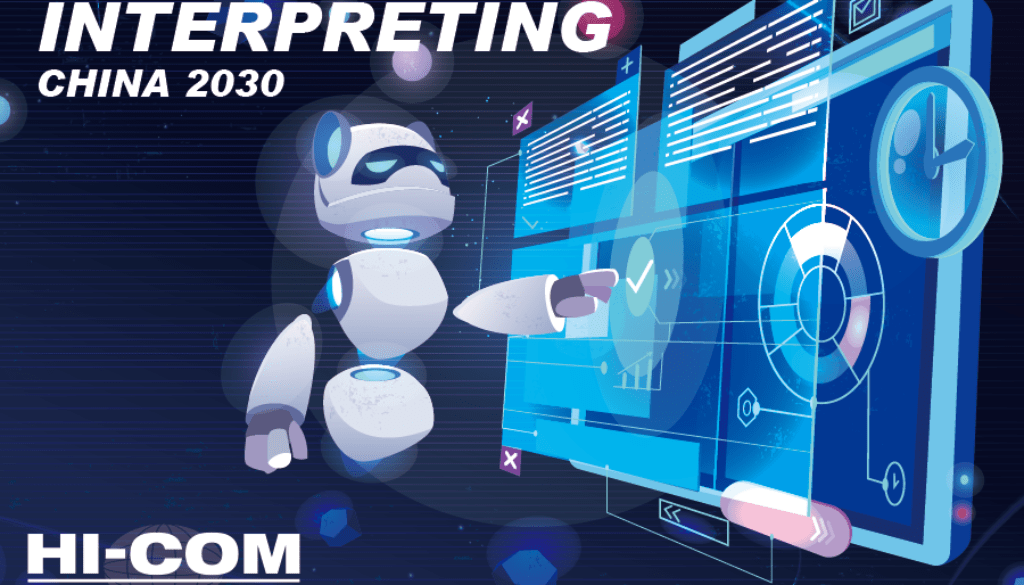The future of interpreting in China over the next 10 years
Like many industries, the interpreting market has also been greatly affected by the COVID-19 pandemic. This encourages us to question the kind of development and changes we can expect the interpreting market to face in the future, or more specifically, over the next 10 years.
- By 2030, machine interpreting will account for half of all interpreting activities. Machine interpreting is suitable for customized application scenarios and customer groups and is characterized by its low price and unlimited supply. It is powered by artificial intelligence technology such as big data, speech recognition, and natural language processing, which is expected to cause a decline in the manual interpreting market.
Translators with a translation level inferior to that of machines and those who are unable to keep up with today’s technology will be gradually replaced in the market. However, manual interpreters with a unique personality or interesting style will be favored over translation machines.
For example, according to previous trends, clients much prefer interpreters with different styles and characteristics so that manual interpreting is not all the same.
- It is expected that the business model of translation companies will change, and the intermediary model will become more difficult to sustain. Platformization and verticalization are both major trends.
Today, it is becoming easier to obtain interpreting resources. The single intermediary competition mode cannot provide customers with more differentiated value. Platformization makes it more difficult to be replaced by integrating more key elements in the value chain. Verticalization cultivates certain high-growth and high-value industries to establish higher competition barriers.
- It is likely that more interpreters will set up their own translation studios or translation companies, and create new partnerships. Whilst interpreters without a brand are becoming more unsustainable, and will only be able to survive by lowering its prices.
In the next decade, it is very likely that the demand for interpretations between China and the United States will decrease. However, as China expands its international influence, it will bring new demands – gradually increasing the overall demand in this industry.
- It is expected that the 2020 pandemic will have a lasting impact on the global interpreting market for at least two years. In the course of these two years, it is likely that more than half of all freelance interpreters will transition into other industries.
Due to interpretation and translation services covering such a wide range of industries, it is likely they will both be affected by the downward economic spiral, whilst the contrast between supply and demand will become more prominent.
However, because it is a cyclical industry, there will be a period of recession. The companies and individuals who have been developing within the interpreting market for a long time will find that the recession is a good time for layout.
All interpreters and translation companies that survive the pandemic will benefit from the next “boom”.
- As the trend of verticalization becomes more obvious (translators involved in certain sub-fields will benefit), more non-foreign language, translation majors, and freelance translators from other professional fields will join the market.
In the future, interpreters who lack professional background will face greater challenges.
- Affected by the pandemic, online remote interpreting is gradually becoming more popular for customers around the world. Even after the pandemic is over, it is very likely that online remote interpreting will continue to be an option for customers.
As a result of the pandemic, online conferences and foreign guests attending remote speeches in the conference and exhibition industry has been encouraged. Whilst another reason for this increase in remote interpreting is due to the convenience of not having to commute.
- As a result of the internet, more and more post-90s and post-00s translators will change the traditional thinking of the older generation and become cross-border youths.
Therefore, you should make use of their experience in the field of interpreting, and expand their abilities via training to challenge the traditional profit model of “hourly workers” who rely on only selling time to get paid.
- Due to the gradual expansion of the remote interpreting market and the high housing prices and living costs in first-tier cities such as Beijing, Shanghai, Guangzhou, and Shenzhen, the idea that quality translators in China will only be located in these first-tier cities will be challenged over the next 10 years.
New first-tier and second-tier cities with lower housing prices and goods prices will attract more young interpreters and improve the shortage of excellent offline interpreters. For conferences held in non-first-tier cities, higher quality interpreting services can be obtained at a lower cost, and the gap between cities will gradually narrow.
In the next 10 years, a group of senior translators will retire or upgrade to work in higher-level fields, and the interpreting market will be the post-90s world, followed by the post-00s.
The general historical law is that after the economic crisis, science and technology will usher in new development and greatly improve production efficiency, thus promoting economic recovery.
It can also be predicted that within the next 10 years, science and technology explode, and the following sub-sectors of science and technology will be studied and researched. This will include fields such as artificial intelligence, blockchain, 5G, semiconductors, new energy vehicles, biomedicine, unmanned aerial vehicles, smart cities, cloud computing, big data, industrial Internet of Things, and smart homes.
However, industries can’t develop without money and business, therefore, it is necessary for interpreters to learn about finance and business.
HI-COM is a multilingual translation agency dedicated to providing professional translation and interpreting services to businesses around the world. Working with more than 40 languages, HI-COM is the go-to localization partner for hundreds of companies and brands.
Contact us for your free consultation today!






